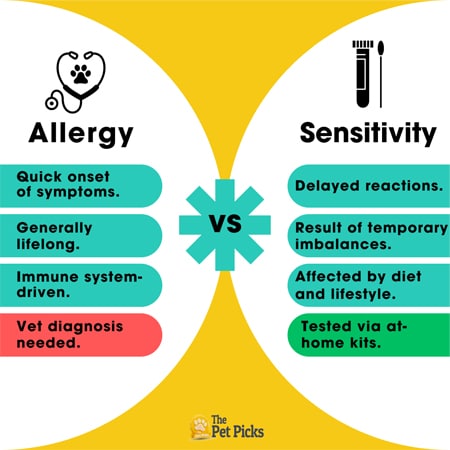FAQs
How is the dog allergy test performed?
The dog allergy test is usually performed using a hair, blood, or saliva sample from your pet. The sample is then sent to a lab where it’s tested against various allergens to identify sensitivities.
How is the dog’s sample collected?
For hair tests, you’ll need to collect a small amount of your dog’s fur, usually from the back of the neck. Blood tests typically require a vet visit, while saliva tests can often be done at home using a swab.
Are dog allergies tests accurate?
When it comes to understanding our furry friends' health, many pet owners ask, “How accurate are dog allergy tests?” The truth is, accuracy percentages can vary significantly between companies. A key factor influencing these percentages is the size of the company's database. The larger and more comprehensive the database, the higher the likelihood of accurate results. This database is not static; it's constantly growing, evolving, and improving with each test conducted. So, when you opt for a dog allergy test, you're not just gaining insights into your pet's specific allergies; you're also contributing to a larger pool of data that benefits the scientific community and other dog owners.
What is the Cost of a Dog Allergy Test?
If you're exploring options for a Dog Allergy Test cost, seeking a cheap Dog Allergy Test, or wondering how much a Dog Allergy Test costs, this is the place for you. The price range for Dog Allergy Tests varies between $50 and $148. This range in pricing mirrors the different levels of detail and analysis offered by various tests. When looking for a more budget-friendly Dog Allergy Test, it's essential to consider the depth of information each test provides. The ideal test should strike a balance between being affordable and offering comprehensive insights into your dog's specific allergies and sensitivities.
What are the most typical allergens?
Common allergens for dogs include certain proteins found in beef, chicken, and dairy, as well as environmental factors like pollen, dust mites, and mold. Some dogs may also be sensitive to grains like wheat and corn.
How old does my dog need to be to undergo this test?
Most tests recommend that your dog be at least 6 months old for accurate results. However, it’s always best to consult with your vet for personalized advice.
What should my dog avoid before I collect the sample?
For the most accurate results, it’s generally advised to avoid any new foods or treatments for at least 48 hours before collecting the sample. Again, consult your vet for specific guidelines.
What are the most common symptoms that are commonly exhibited in dogs with an intolerance or sensitivity?
Dogs with food or environmental sensitivities often exhibit symptoms that can be easily mistaken for other conditions. The most common signs include:
- Skin Irritations: Redness, itching, and hot spots.
- Digestive Issues: Diarrhea, vomiting, and frequent gas.
- Ear Infections: Frequent ear infections or excessive ear wax.
- Behavioral Changes: Increased scratching, licking, or chewing on affected areas.
It’s crucial to consult your vet if you notice any of these symptoms, as they can also indicate other health issues.
Do different dog breeds suffer from different allergies?
Yes, different dog breeds may be more susceptible to specific allergies. Some breeds that are sensitive to issues with food and/or airborne allergies include Maltese terrier, Pekingese, German Shepherd, Bull Terriers, Bichon Frise, and many others.
Ready to Uncover the Key to Your Dog’s Health? Take the First Step Today!
Whether it’s skin irritations, digestive issues, or just a proactive approach to pet care, an allergy test can provide invaluable insights. Don’t wait for symptoms to escalate; take action now for a happier, healthier fur baby!







